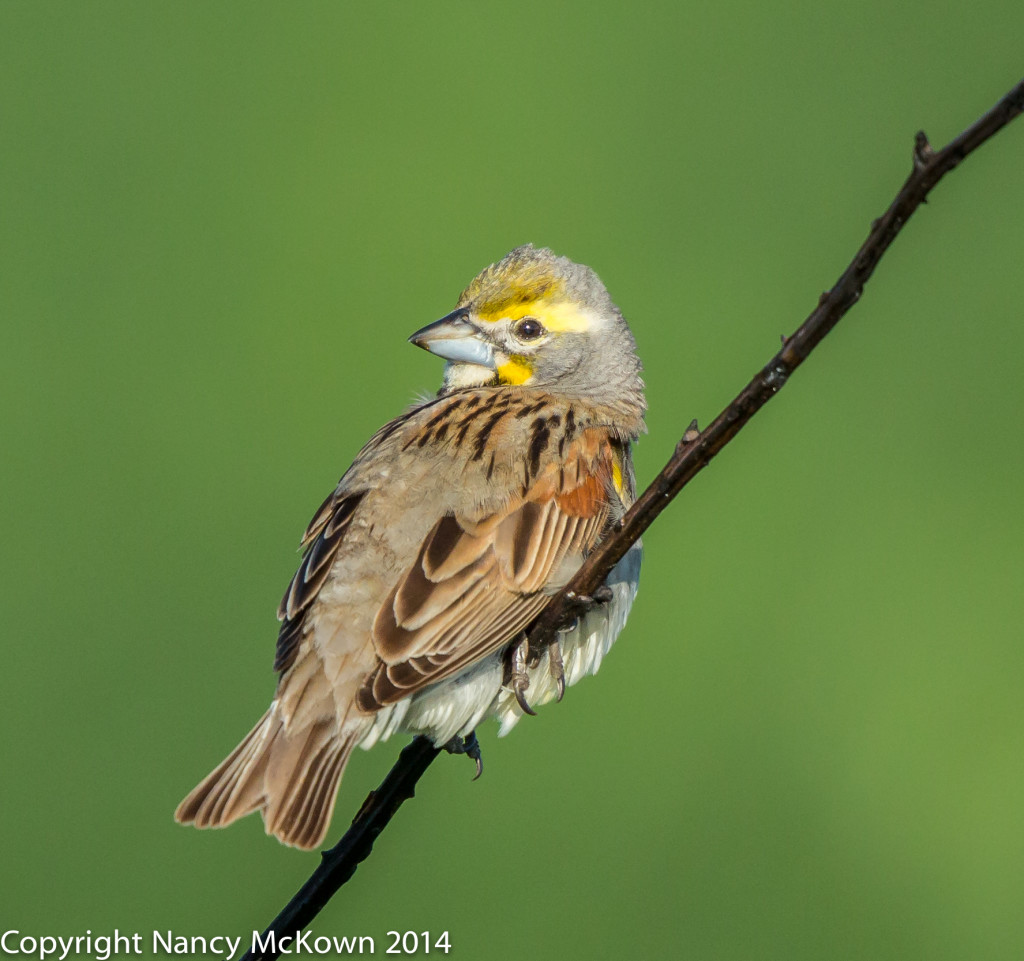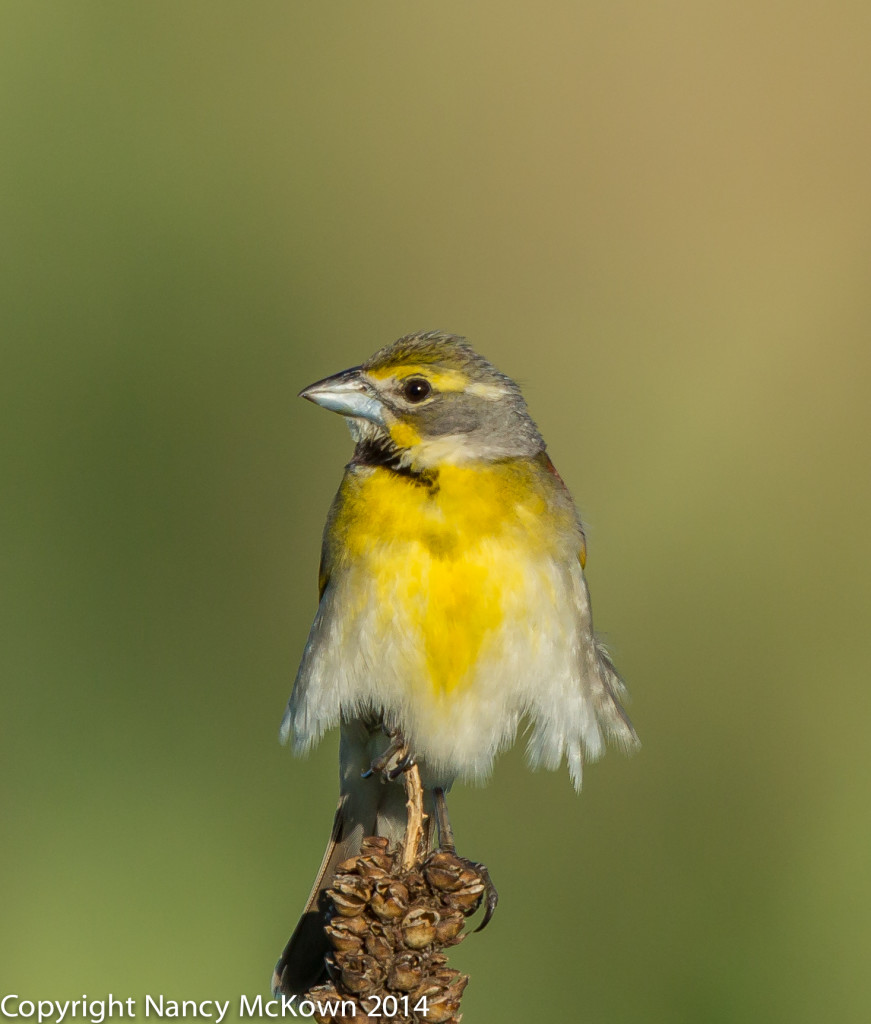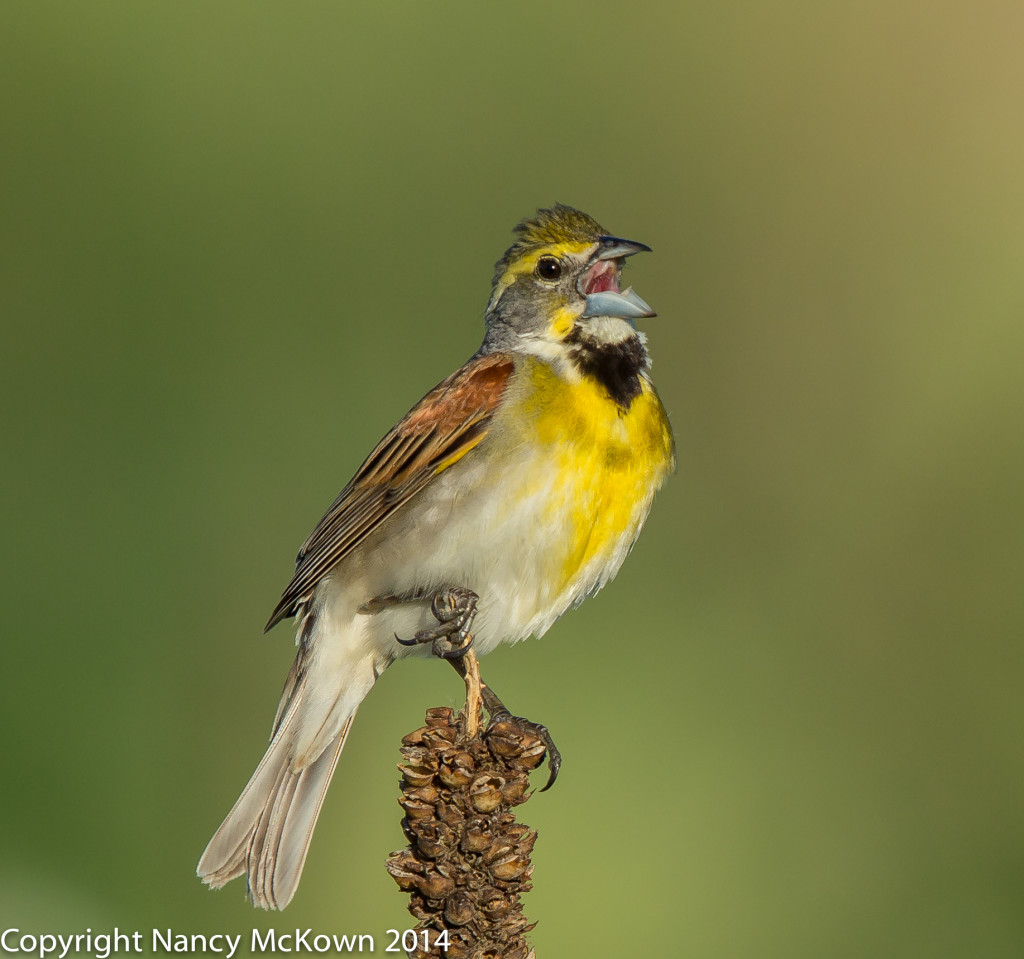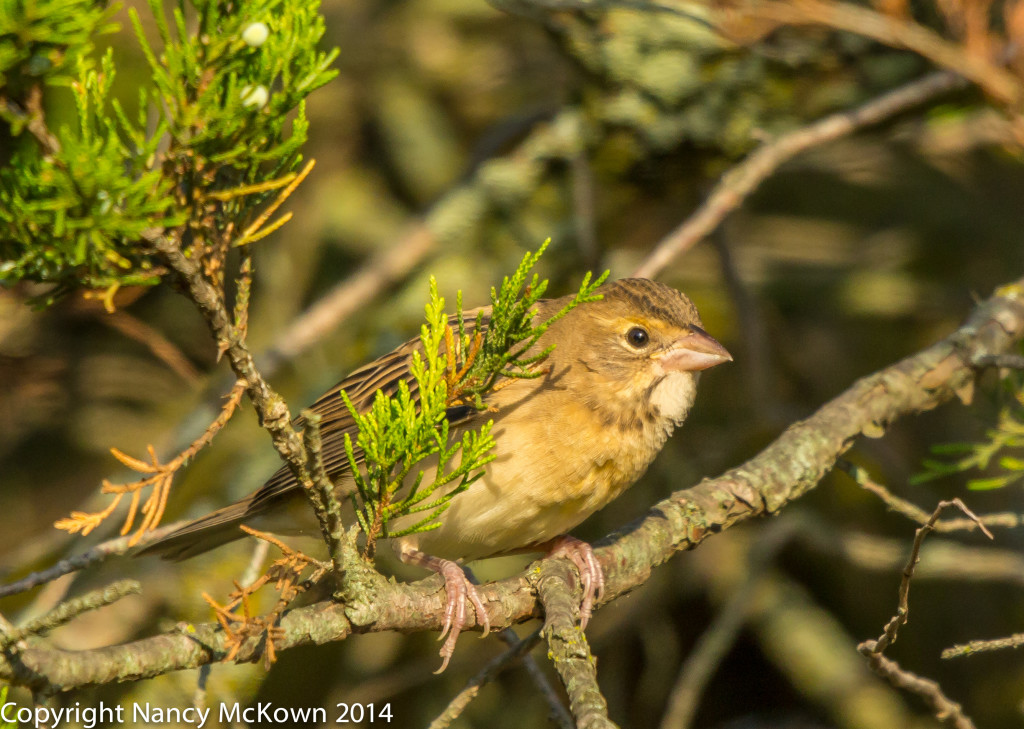Photographing Dickcissels
The first time I looked through my lens and saw a bird with a large beak, yellow stripe cutting through the eyes and black patch stamped onto its bright yellow breast, I thought I had found a miniature meadowlark. This individual was easy to photograph because he was out in the open, flitting about on the grasses and occasionally landing on mullein flower stalks. As I continued to take photos, the bird rotated on his perch and his back side plumage came into view. From this angle, the bird began to look like a common sparrow. I was flummoxed and could not visually ID this bird out in the field.
Had I been a more practiced listener of bird song, I would have been able to ID the dickcissel because within his song is the pronunciation of his name.…..“dick-dick-cissel”

ISO 1250; f/8; 1/2500 Second
Auditory ID of Birds
Often, bird photographers don’t locate birds through their binoculars or the camera lens. They find them very successfully by listening and then tracking bird song. Auditory ID is a very useful skill for birders and photographers.
Many of the birders I know are not only excellent at visual ID, but can also tell what and where a bird is just by listening to its calls and songs. Watching these auditory blood hounds in action is fascinating. The best of them pick up and then isolate some far off bird tune carried in the wind, turn their heads toward the sound, dissect the rhythm, tone, pitch and repetition qualities, and come up with an auditory ID. They can do this even if there are dozens of different bird songs in the air. And remember, it’s not just a matter of matching and memorizing one distinct song for each species. There is tremendous variation in birdsong- just like the sizes, shapes, colors and patterns of the birds themselves. Many birds have 2, 3 or more distinctive songs. Some birds mimic other birds as well as sing their own distinct songs. Birdsong from the same species of bird can differ from region to region. These auditory bloodhounds are able to discern different dialects of the same song.
Impressive detective skills indeed.

ISO 500; f/9; 1/1250 Second

The dickcissel is the perfect bird with which to start bird ID auditory training because
within his song is the pronunciation of his name…..“dick-dick-cissel”.
ISO 320; f/9; 1/800 Second

ISO 1600; f/8; 1/1000 Second
Auditory Bloodhound Training
Birdsong is much more than music to our ears. Auditory ID is a very reliable way for photographers to find birds in the wild. The primary advantage is that your ears can hear the sounds all around you, no matter what direction you are facing. A sight ID means that your eyes have to be looking at the right place at the right time.
- If you are interesting in learning to ID a bird by its songs, calls and whistles, a good resource is “5 Tips for Beginners” and can be found at this link.
- If you love birdsong, and are interested in how and why the birds sing, Donald Kroodsma’s, The Singing Life of Birds: The Art and Science of Listening to Birdsong is a wonderful resource (Book plus CD).
- For more information about dickcissel migration patterns, see this map from ebird.









